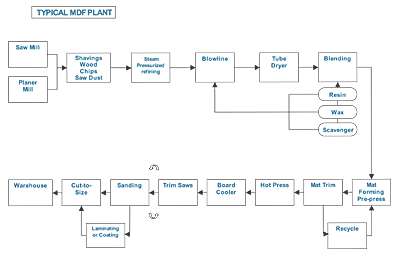Composite Panels: Particleboard and Medium-Density Fiberboard
Benefits of MDF:
MDF is a higher-end, non-structural interior product compared to particleboard. It is used in the most detailed of applications because it offers more design flexibility than particleboard.
- Its surface is flat, smooth, uniform, dense, and free of knots and grain patterns.
- The surface features make finishing operations easier and more consistent, especially for demanding uses such as direct printing and thin laminates.
- MDF can be overlayed with items that include veneer, high- or low-pressure laminate, low basis weight papers, vinyl and hot stamp foils or treated with a powder coating. Some MDF can be embossed.
- It can be easily routed and drilled. The homogeneous density profile of MDF allows intricate and precise machining and finishing techniques for finished products.
- MDF holds precise tolerances in accurately cut parts.
- It has acoustical dampening properties.
- There are specialized MDF panels for specific applications.
- MDF has the ability to take dyes and pigments, producing colored panels.
Manufacturing MDF
MDF is made from much of the same types of recovered and recycled wood waste as particleboard, but is "cooked" using a different manufacturing process.
|
Introduced into the high-energy refining system, the recycled waste is literally cooked in a steam pressurized "digester." This allows the raw material to become softened and to actually change physically and chemically so that the fibrous material becomes less susceptible to the influences of moisture and less brittle as the lignin (the substance that, with the cellulose, forms the chief part of the woody tissue) softens.
The material remains under pressure as it is processed through rotating refiner plates, getting rubbed apart into uniform fiber size. Resin is usually applied in the "blow line" as the fiber exits the refiner, i.e., before drying, but it is sometimes applied after drying (see Figure 3). The most common binder for MDF is UF.
Other types of resins and additives can be used to provide special properties such as moisture resistance or fire retardancy. The wood-fiber-resin combination is dried to a uniform moisture content, formed into a homogeneous mat or in separate face and core layers of random fiber orientation and hot pressed to complete the rough manufacture.










